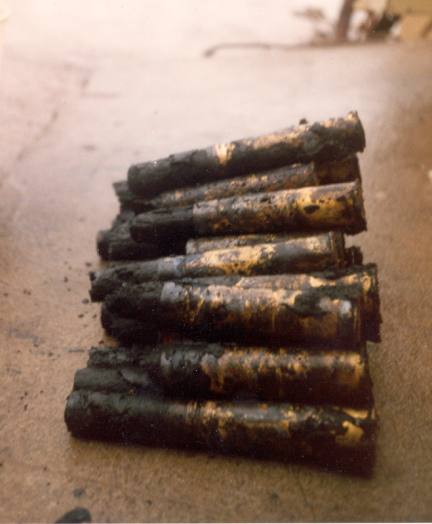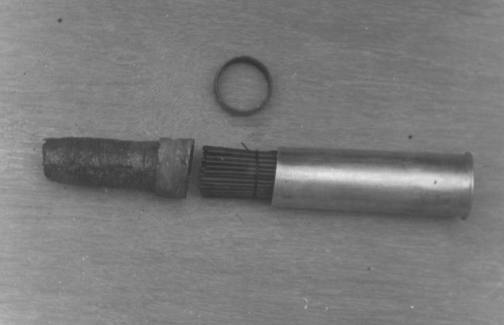The Tamar River is the dividing line between Devon and Cornwall, and over on the Cornish side just opposite Devonport Dockyard lies, at low water, the mud flats of St. Johns Creek. The stretch of water just off these mudflats is called the Hamoaze, and it was here in the 1850’s that the Navy sited its gunnery school H.M.S. Cambridge. The school consisted of two hulks moored together to provide accommodation and gunnery training, and a shore area adjoining the mudflats at Trevol in Torpoint, which is now the site of H.M.S. Raleigh, the Navy’s training establishment.

Cloth targets were put up in the mud fixed to wooden poles set deep in the mud. From Trevol the Navy practiced live firing with Martini Henry rifles, Lee Metford rifles and small cannons like the ones now used in the Navy’s Field Gun runs. From the hulks the Navy fired cannon balls inland, across the water to the mud flats. These cannon balls were solid shot as opposed to the ones that were hollowed out and filled with gunpowder for active service. This carried on till the turn of the century when the hulks were scrapped and the gunnery school moved to the naval Barracks at Devonport. (It later moved in 1940 to Wembury, but that has now been demolished.)
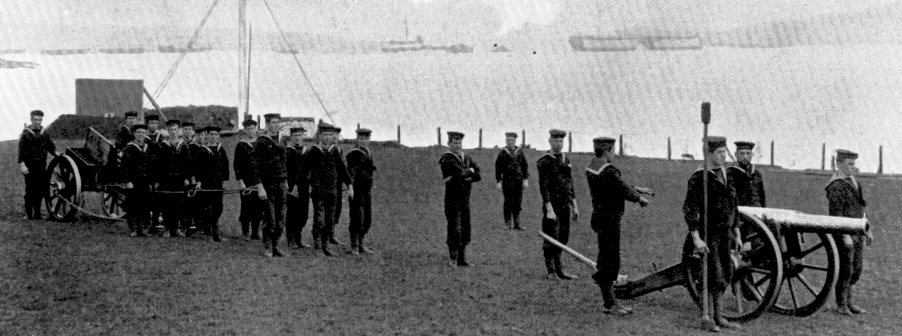
Consequently the mud flats are literally a carpet of old shells, cannonballs , spent lead bullets from the rifle ammunition, and you can also, still see the remains of the wooden targets. As we were just at the start of our discovery of ammunition under the sea , we thought that we could find out more about these shells and cannonballs if we ventured out onto the mud and gathered a few for examination. We should have stuck to diving.

As soon as we started it began to rain and the mud was deep and very sticky, causing wellingtons to be sucked right off our feet. To make matters worse, there were small rivers in the mud flats that, as the tide turned, became quite deep and fast flowing. However all that paled into insignificance once we saw all the balls and shells. There were hundreds of them, just lying around in heaps.

Most of them were solid cannon balls with a good smattering of small RML’s (practise) and loads of spent bullets. As we gathered up some of the cannon balls onto a sort of sled, the rain came down in torrents and the tide started coming in with a vengeance. We were all soaked to the skin by now, and some of us were covered in mud from continually falling over as your foot slid out of your wellie leaving you unbalanced hopping on one foot.
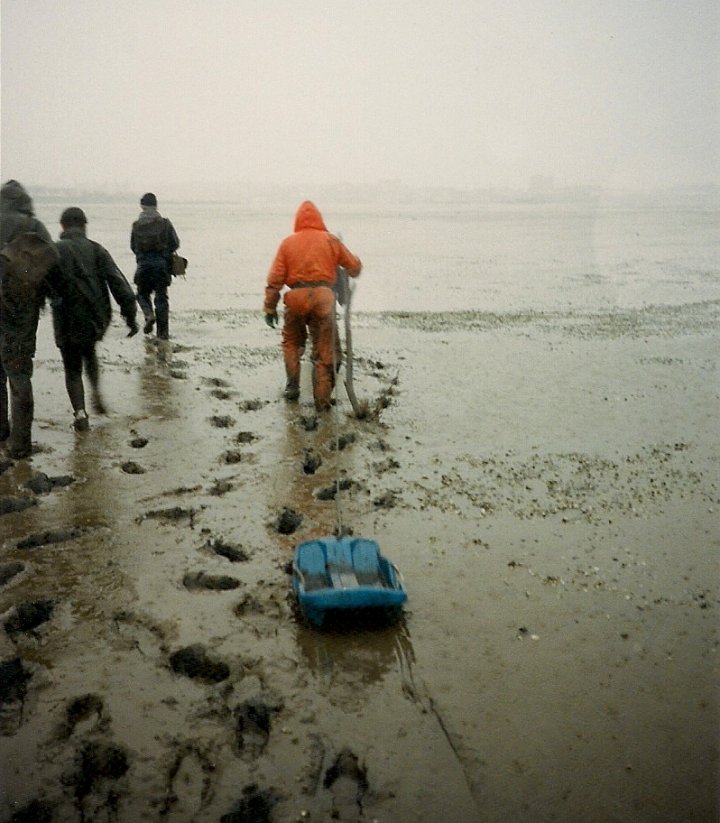
Getting back to the car became a bit of an endurance course, as the tide and rain had swollen the rivulets into full blown streams, which on one occasion we had to rope across up to our waists.
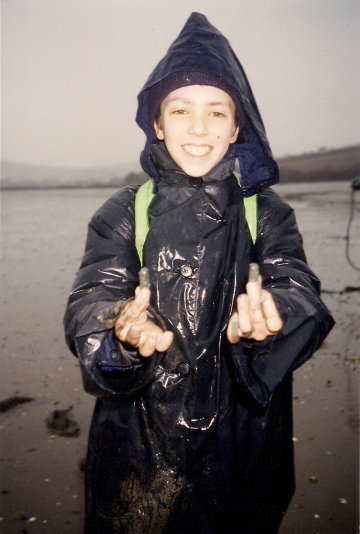
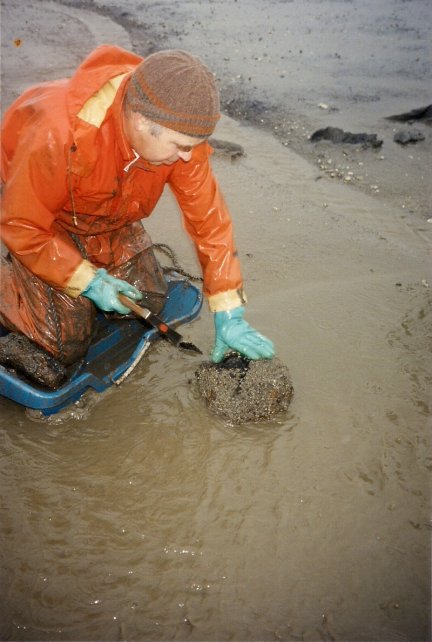
Looking at these photo’s it seems impossible that we had any fun, but we did. It was a great day out, but none of us has ever mentioned doing it again.
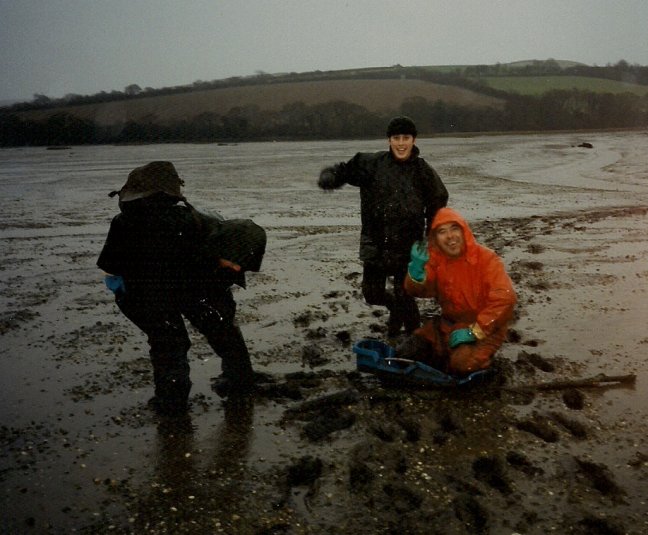

Bombs And Bullets DVD
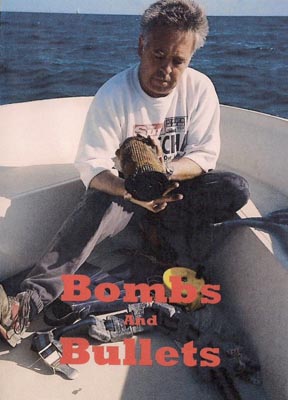
The seabed around Plymouth is littered with bombs and bullets of all kinds. Most are from the Victorian era, but many are from the last two World Wars, and up to the present day.
In this film, the team recover mainly Victorian ammunition, cannonballs, and a variety of other bullets and shells, tell you all about them, and place them in their historical context. Running Time 26 mins
This DVD is temporarily unavailable
Bombs And Bullets
Plymouth they used to say, was the cradle of the Royal Navy,and since before Napoleonic times, rings of fortifications were built around the coast to protect the Navy and its Dockyard. All of these forts practiced fired into the sea, and during the two World Wars, thousands of tons of ammunition, in the shape of bombs and bullets, were dropped, fired, or dumped onto the sea bed.
If you dive around Plymouth it is impossible to avoid seeing these pieces of ordinance, even if you do not immediately recognize what they are. Many are still lethal and should not be interfered with .
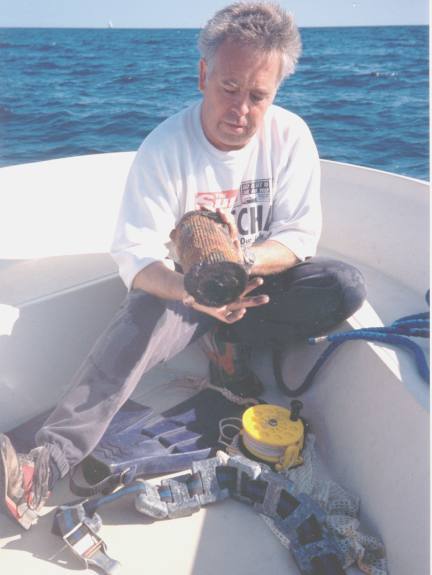
Small Arms
Many other types of projectile can also be found in large no’s. One of the most common is a 1″ (1lb) lead bullet. This round was fired from a “Sub calibre” aiming rifle tube that was fitted into the breech pieces of larger guns (6″, 9.2″, 15″, etc.) and would allow target shooting without the associated wear and tear on the gun if full calibre rounds were used.
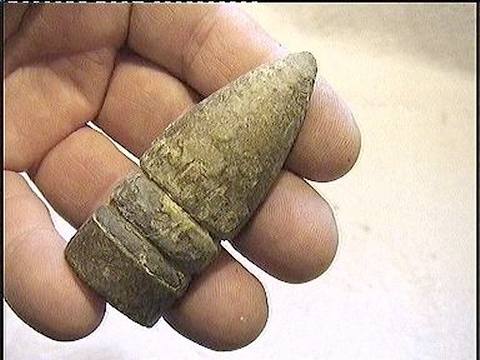
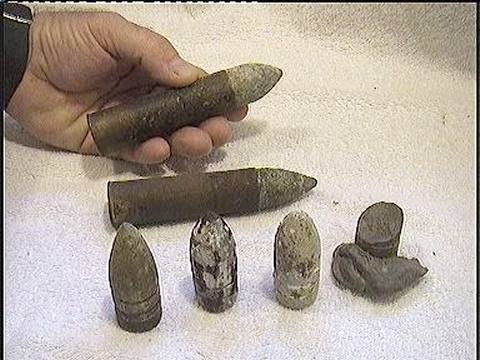
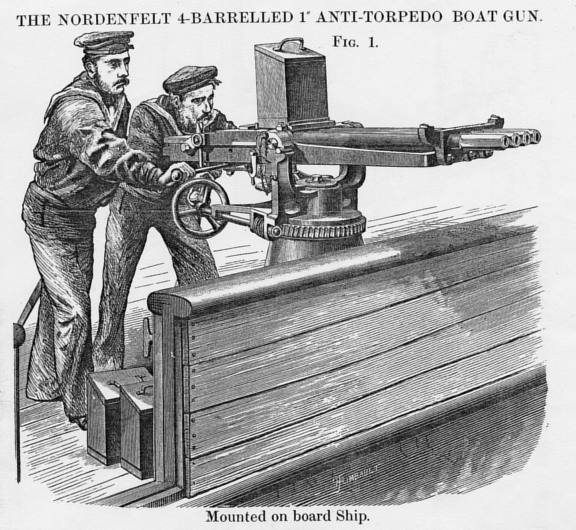
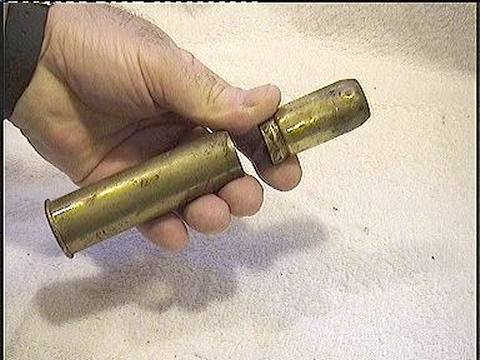

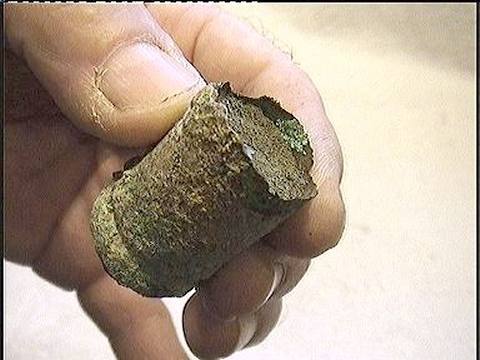
Many other rounds have been fired into the sea over the years and a selection of finds are shown below:-
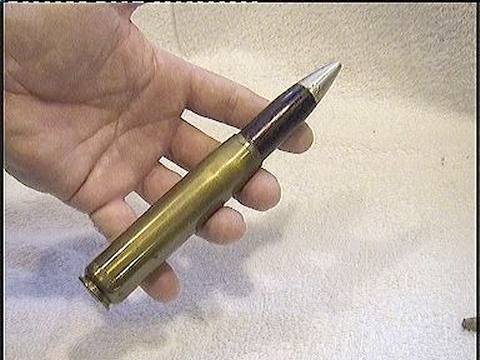
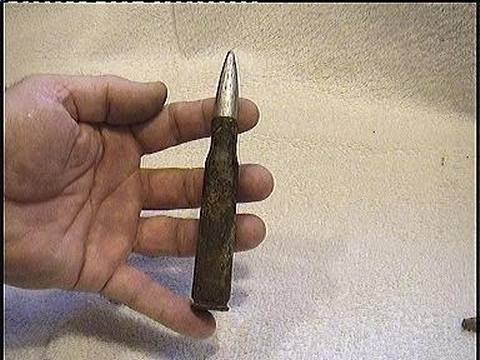
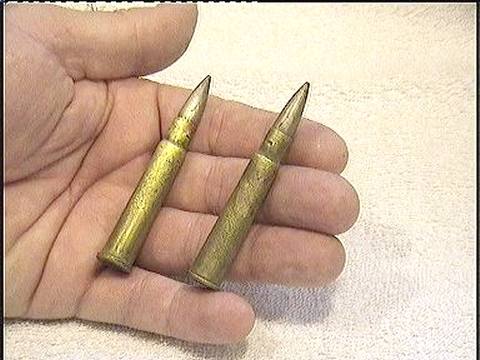
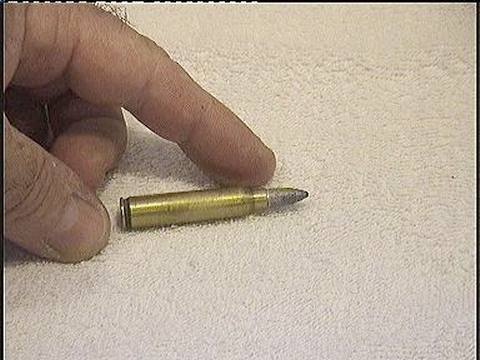
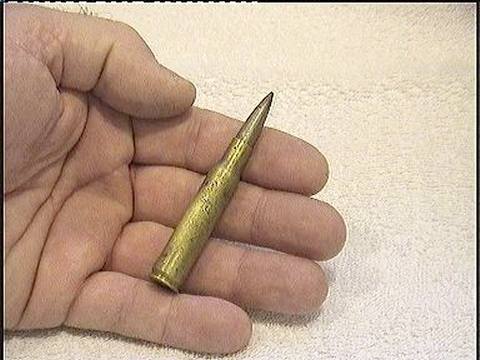

Extract from Bombs and Bullets DVD
Cannonballs
It is inevitable that Divers will find many types of “Artillery projectiles” and other types of ordnance when diving arround Plymouth. Over the centuries large numbers were fired out into the sea from the numerous shore batteries that line the edges of the Sound. Finds from the earliest times are typically “Roundshot” ( cannonballs) and mainly were fired from Staddon Point Battery and the early Picklecombe Fort.
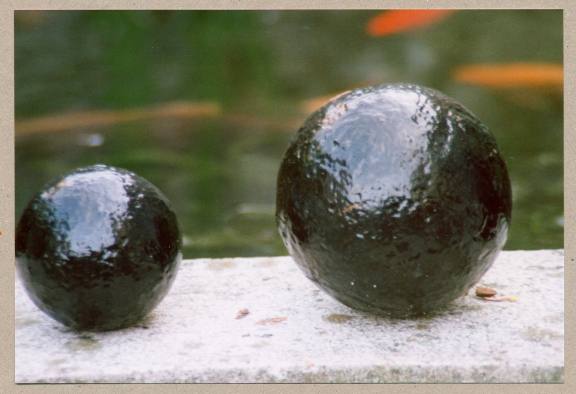
The guns had ranges out to about 2,000 yards and if an arc is drawn on a map of the Sound it will show where most shot are to be found.
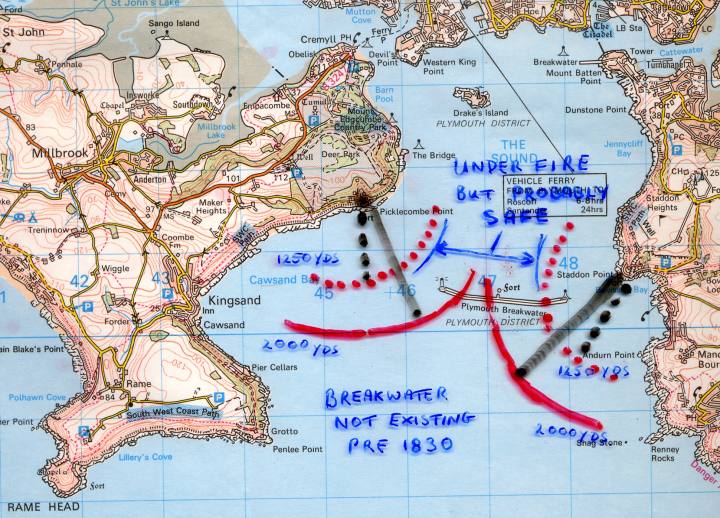
These two forts below are the source of many of the “Cannonballs” that are found in the waters off Plymouth.
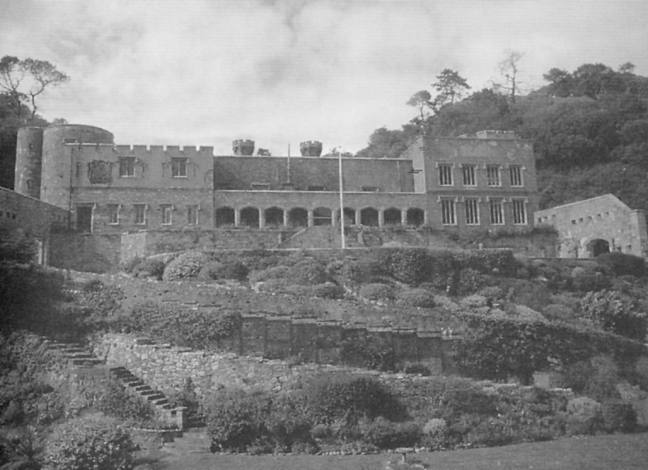
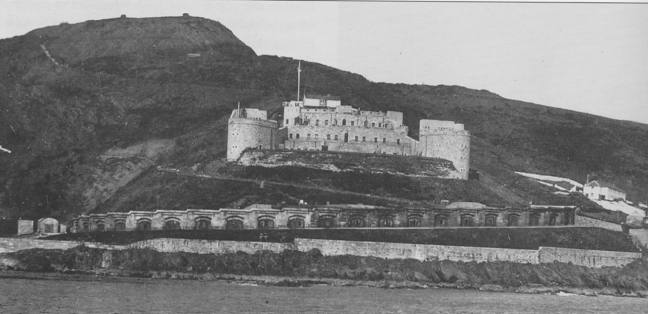
Due to chemical reaction with seawater, a “Concretion” up to about 2″ thick will form on “Cast Iron” objects and the carbon content of the metal itself gradually converts to a form of graphite. This will fall to dust if the projectile / cannonball is raised and dried out.
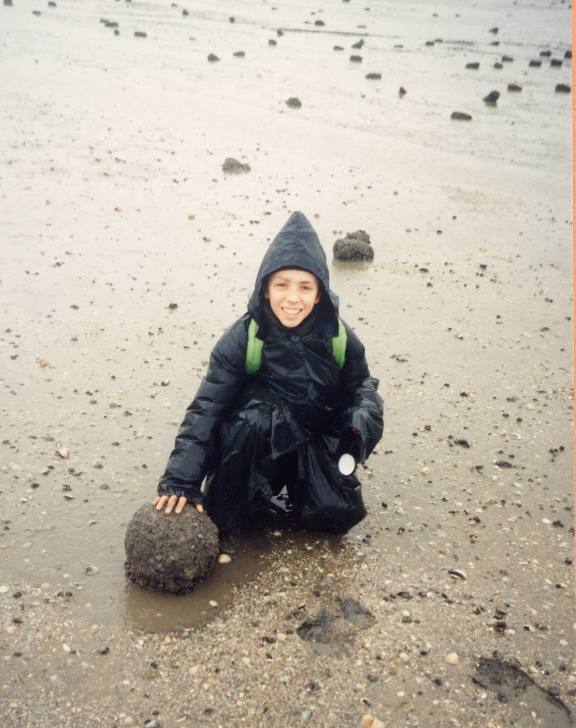
Sometimes you can find two small cannon balls joined by a metal bar. These are called Bar Shot and were very usefull in ripping sails, or chopping down masts. You can also find them joined with chain but these are very rare as the chain tends to rust away.
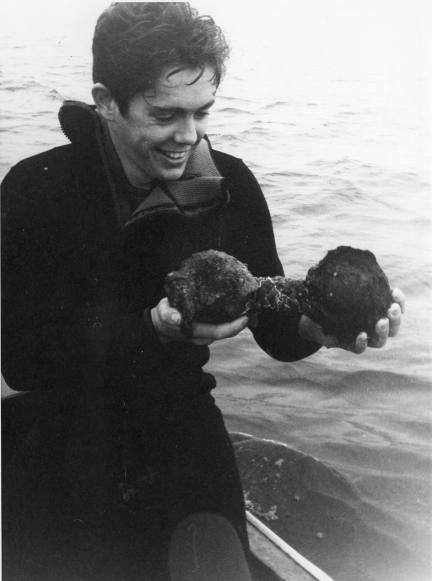
You can also find cannonballs with a wooden peg in them. These are full of ‘black powder’ and the wooden peg acted as a crude fuse.These were more properly called a ‘mortar’ and were fired at a ship or land battery, and exploded when it hit the side of the ship or fort.They were not very effective but there are quite a few to be found in shallow water. If dried out the ‘black powder’ will probably ignite, so its not one for putting by your fireplace.
The Brennan Torpedo
The Brennan torpedo, invented around 1876, was the very first wire guided torpedo, and was similar in appearance to the modern day type, save that instead of being circular in cross-section it was fish shaped. It was designed to run to run at a consistent depth of twelve feet underwater and had an indicator mast sticking up from the torpedo until it just broke the surface. At night this mast had a small light fitted which was only visible from the rear.
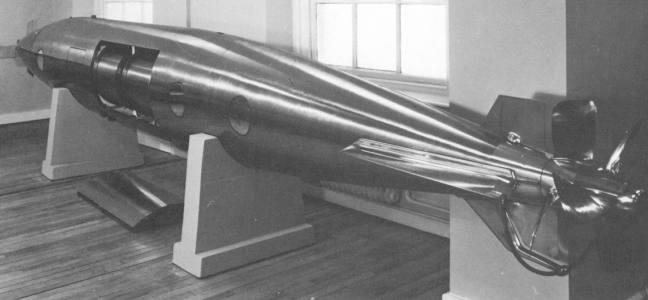
In the body of the torpedo, two steel drums were mounted, each carrying several miles of high tensile steel wire. The drums were connected through a differential gear to the twin in line propellers arranged to rotate in opposite directions. If one drum were rotated faster than the other then, although the propellers rotated at the same speed, the rudder was activated. The twin wires from the drums passed out through the tail shaft, small steel rings embracing the wires were paid out at intervals thus preventing the wires from separating. The other ends of the wires were connected to winding engines, either on a ship or (mostly) land base, and these twin winding gears were so arranged that their respective speeds could be varied within fine limits, thus providing sensitive control for steering the torpedo towards its target.
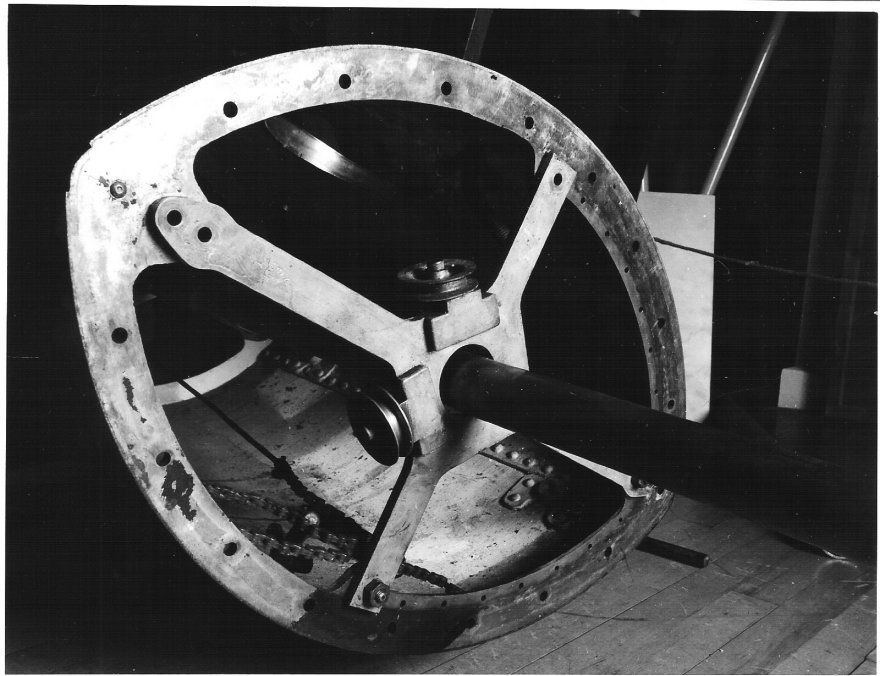
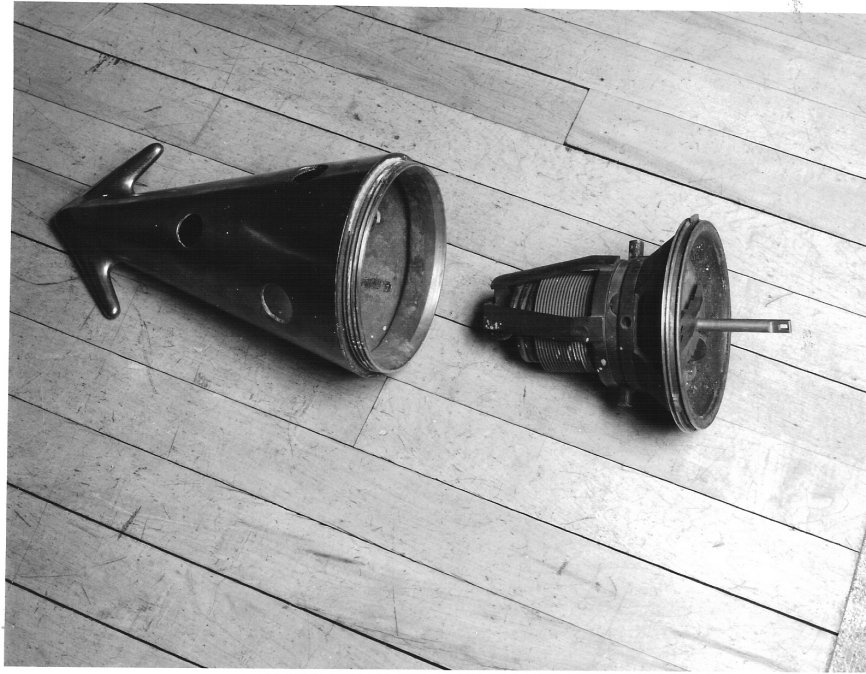
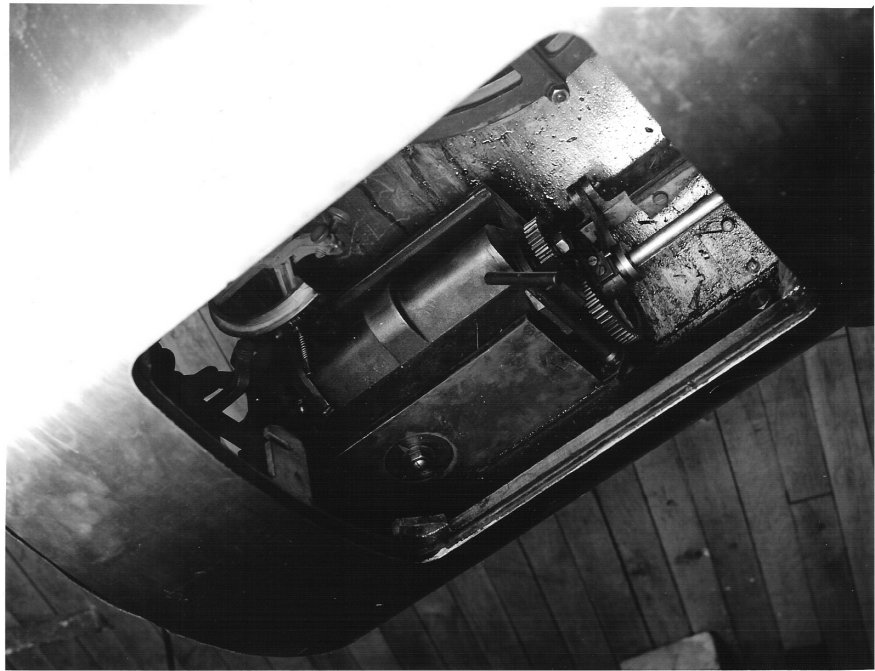
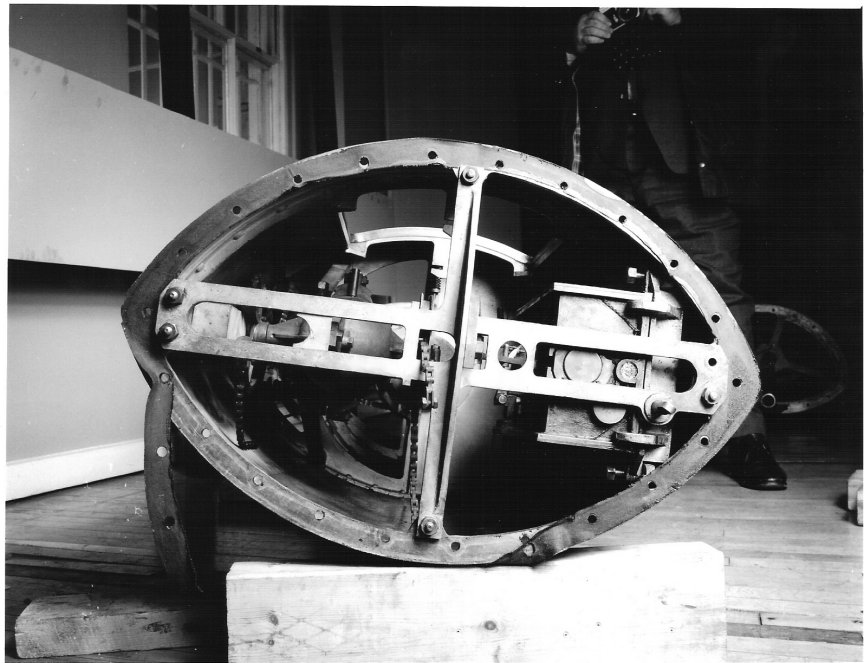
The torpedo attained a speed of 20 knots using a wire .04 inches in diameter but later this was changed to .07 inches to increase the speed to 27 knots. The torpedo was fitted with leading elevators controlled by a depth mechanism and with the fore and aft rudders operated by the differential between the drums. The method of operation was that the officer in charge would be either in an elevated position in the ship or, if on a land base, on a 40ft high telescopic steel tower, hydraulically extended. He was provided with a pair of binoculars on which was a keyboard from which he could control electrically the relative speeds of the twin winding engines. In this manner he was able to follow the track of the torpedo and steer it with a great degree of accuracy. In tests carried out by the Admiralty the operator was able to hit a floating fruit basket at 2000 yards and demonstrated the ability of the torpedo to turn through 180 degrees and so attack a ship from the off side.
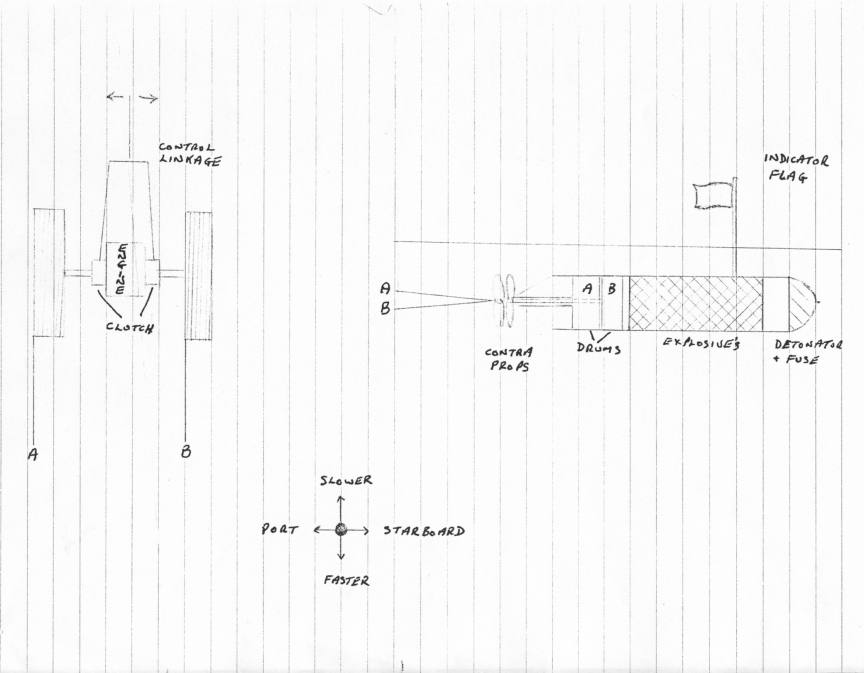
The Admiralty, at first enthusiastic then took against the weapon and in 1884 told Brennan that they had no use ‘for a new way of destroying shipping’ However a few weeks later Brennan received a letter from the War Office stating that they had decided to adopt his torpedo as a means of harbour defence and he was invited to attend a meeting to place a value on his invention. Brennan, considerably out of pocket decided to accept ?40,000 as a quick fix to his financial worries but his able business partner J.R.Temperly took over the negotiations and demanded ?100,000.The War Office agreed to this, but said they would have to pay it over three years. Brennan accepted this, but Temperly demanded another ?10,000 for the delay and after a bit of wrangling the War Office agreed. Brennan was delighted and every year he would drive to the bank of England in a horse and cart and collect the equivalent of his fee in gold bars. The Brennan torpedo became standard harbour defence throughout the British Empire and was in use for more than fifteen years.
Louis Brennan:
Born in Castlebar, County Mayo in 1852, Brennan was still a small child when his family emigrated to Australia, where in due course he attended the College for Artisans in Melbourne.
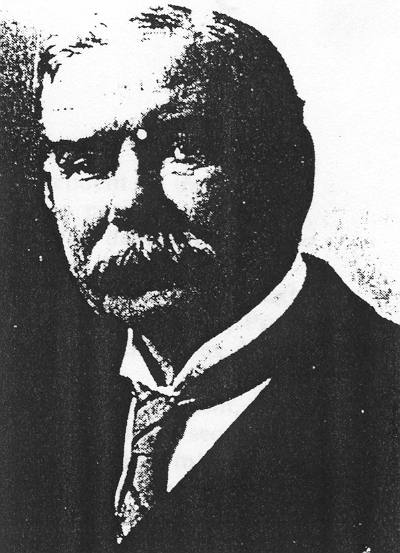
Besides the torpedo he invented a gyroscopic monorail and a type of helicopter. In spite of his inventive genius and a charming personality his private life was tragic. He lost one of his two daughters in the flu epidemic that followed the First World War, his wife was mentally unbalanced, and his son had to give up a promising Army career for the same reason and died at an early age in an institution. Brennan was knocked down by a car in Switzerland in December 1931 and died a month later on 17th January 1932; he was 79 years of age.
Pier Cellars:
Pier Cellars dates from around 1560 when it was used for the storage and smoking of Pilchards. The small buildings above the Harbour have been used as a farmhouse, a grog shop and the local headquarters for the later detachments stationed there in the 1900’s. The cellars were requisitioned by the government in 1889 to house the newly developed Brennan torpedo. Each station had twelve torpedos and was manned by one officer, one mechanist, eight N.C.O.s and two engine drivers. The pier that was adjacent was used to land stores and munitions for the station.
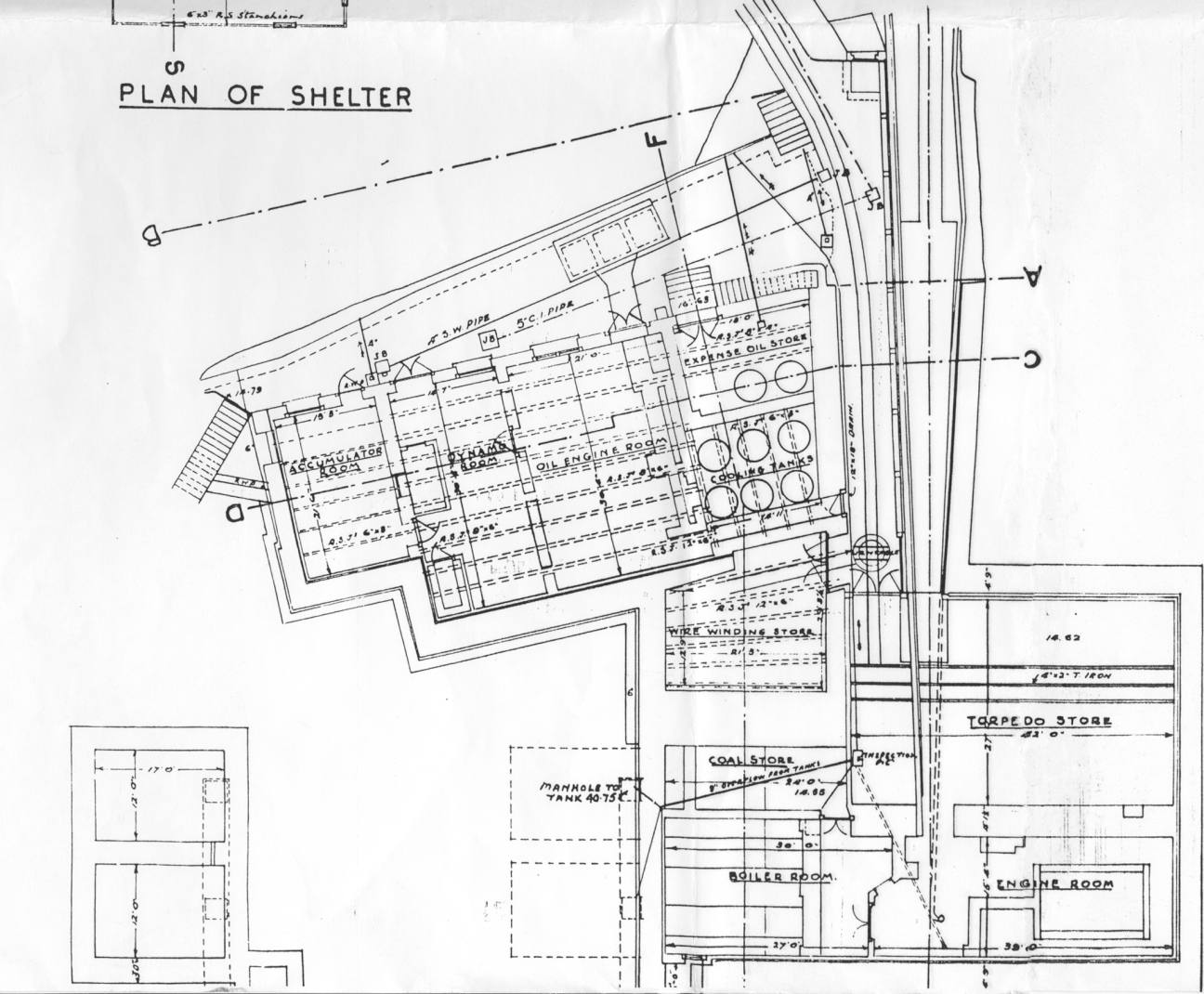
The original engines were steam driven, and after the torpedos were taken out of service search lights were installed which were driven by a generator belonging to Hancocks the fairground owners. Three guns were installed in 1898 to the left of the house. These were a 12 pounder and two QF anti aircraft guns. Two searchlights were used to provide crossbeams to range the guns at night. The station was ‘tested’ in 1901 and 1902 when the lights were operated by a detachment of the Royal Engineers and the guns were manned by the 2nd Devon Volunteer Artillery.
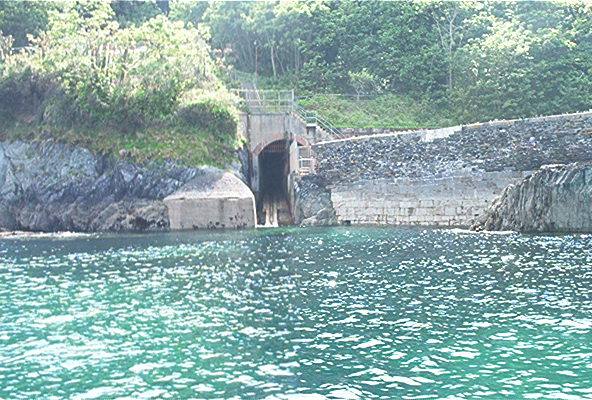
The station was closed in 1906 as the policy changed from static torpedo bases to the torpedo boat destroyer. The stores and equipment were either returned to Chatham or scrapped on site. Although the station was all but closed the guns still remained. The pier was removed in 1914 as a precaution against the enemy using it as a landing place and the guns were finally taken away in 1920. During World War two the station was used for the development and testing of one and two man torpedos of the Welman Chariot type. Pier Cellars is currently used by the navy as an assault course and training base.
Brennan Torpedo: The History and…
![]()
This excellent book will tell you all you could wish to know about the torpedo.
Breach and Muzzle Loaders
In 1859 the French launched “La Gloire”. This armoured warship was developed using knowledge gained during the “Crimean War” when it was found that “Roundshot” fired from smoothbore cannon would bounce off the sides of “Armoured Ships” and cause no damage. Her appearance rendered all of our coastal defence forts, and our wooden walled warships, obsolete overnight.
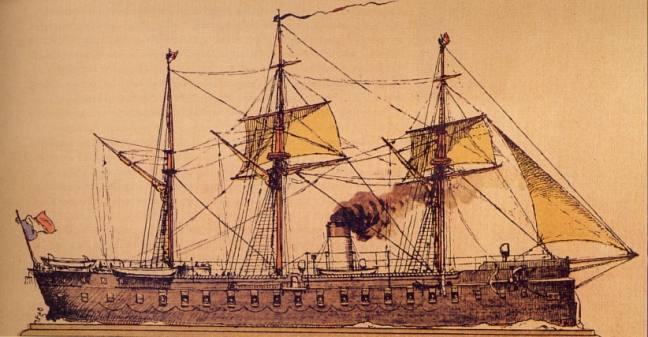
This sparked an arms race the like of which had never been seen before, and whose effect is carried on to this day. Although explosive shells had been available for smoothbore cannon for many years, they were still spherical and had minimal penetrative effect. A pointed, cylindrical projectile was required, along with a much higher velocity when fired.
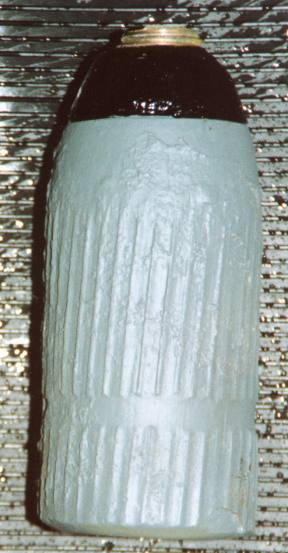
The earliest, successful guns and projectiles that fitted this bill were those produced by Sir Thomas Armstrong in the 1860’s. The guns were “Rifled” and the projectiles were lead coated to allow the rifling to grip and rotate the shell thus giving it greater accuracy and range. The lead coating also sealed the gap between the shell and the bore thus minimising the amount of “Windage” or “Blowpast” of gases and ensuring that more of the energy from the gunpowder’s explosion went into driving the projectile.
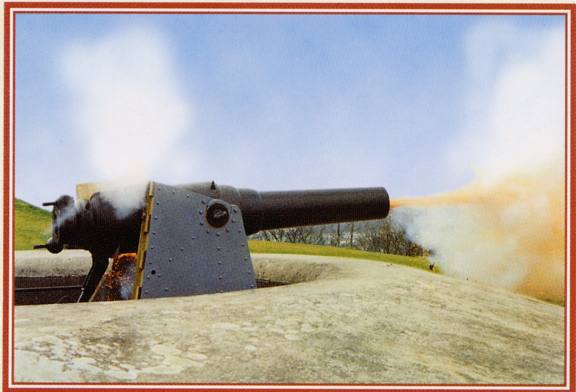
Also, because it was now cylindrical, much greater weight of impact could be concentrated on its target than was possible with spherical shot. There was a drawback with “Armstrong” guns, however, in that the metal technology of the day was not quite up to the mark, and there were many instances of the breeches of these guns blowing out and killing and maiming the gun crew. Also the lead coating was prone to stripping off on firing and the shell would become unbalanced and fly off in unpredictable directions.
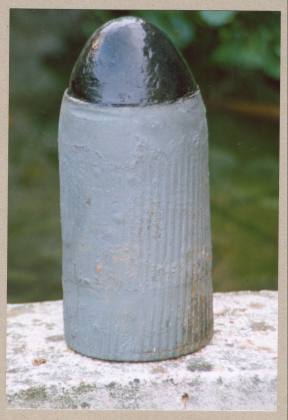
By the mid 1860’s guns reverted to being muzzle loaded. This was not the apparent retrograde step it first appeared. Gun manufacturing and casting techniques were better understood and weapons up to 17.25″ calibre could be made. Those around Plymouth ranged from a fairly small 2.5″ (7 & 9lb.) field gun up to 12″ or 13.5″ pieces. Most common size found is the 6″ (64lb) shell, but 9″ & 12″ are frequently seen as well.

These guns were rifled with 3 or 5 or more coarse grooves, the shells carried a series of Copper / Bronze studs which rode in the grooves to impart rotation to the shell on firing.
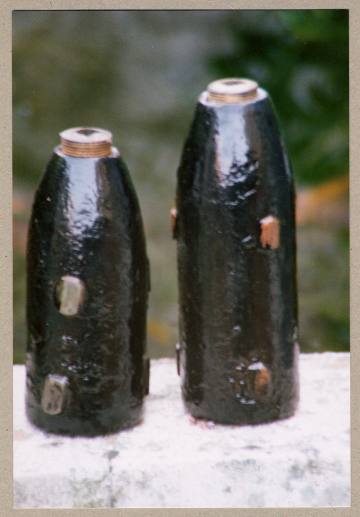
Because the shell had to be a fairly loose fit in the guns bore to allow it to be loaded, a large copper disc was first placed on top of the powder charge before the shell was loaded.
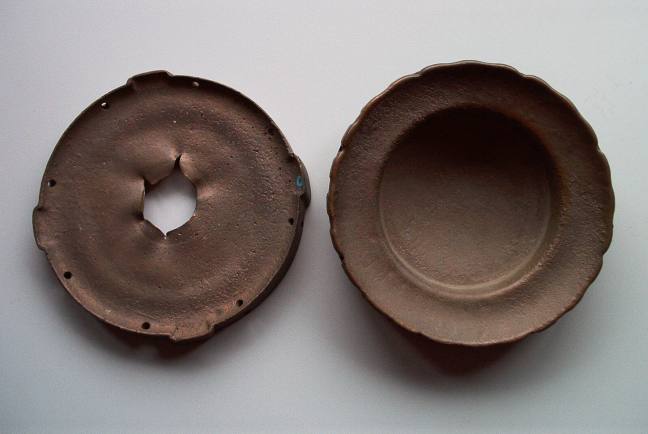
This “Obturator” or “Gas check” would be forced onto sharp radial ribs on the rear of the shell on firing and through this grip would spin the shell to stabilise it in flight. These can sometimes be found but are usually badly damaged.

Largest RML ever produced were the 17.25″ (100 ton) weapons that were emplaced on Malta and Gibraltar. Only example now existing is on Malta at Fort Rinella.
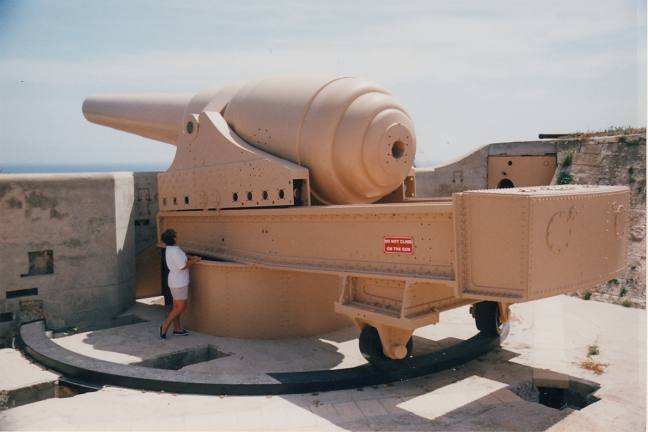
RML Guns continued in use until approx. 1895-1900. Many old and obsolete smooth bore cannon given a new lease of life by having a “Rifled liner” inserted and expanded into place by firing a heavy “proof” charge. These were called “Palliser Conversions” an example of which can be seen at Dartmouth.
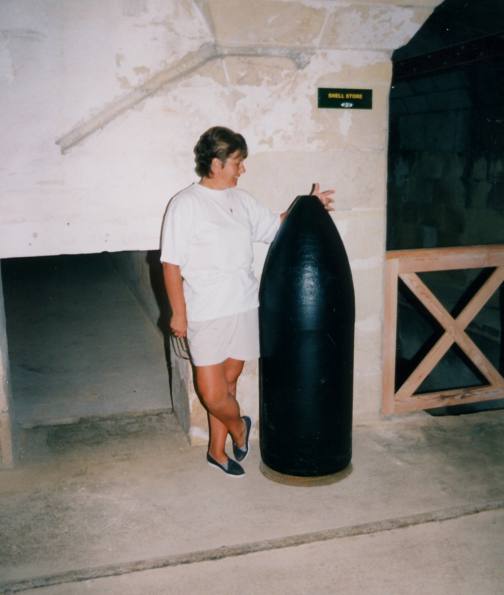
By 1890’s technology allowed newer and better Breech Loading Guns to be manufactured. The shells for these guns were also fairly different in that instead of studs ( and the weakness they built into the shell body) they were fitted with a circular “Driving band” an inch or more up from the base of the shell. This again provided a gas seal and also provided the means to spin the shell in its passage up the guns barrel.

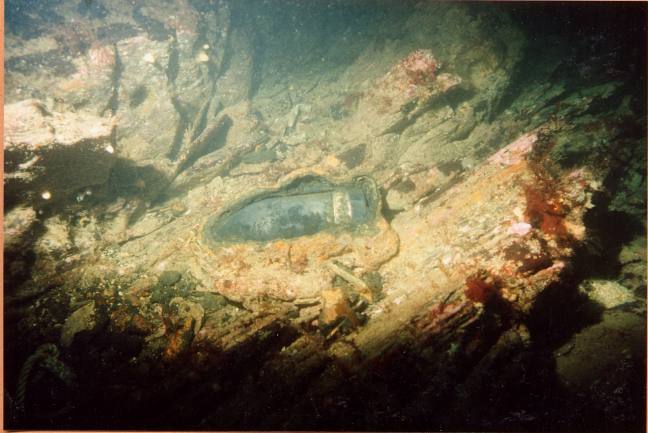
Base and Nose Fuses
The “Base Fuse, Impact” as shown below, was fitted into the base of a shell’s projectile. This served a two fold purpose,
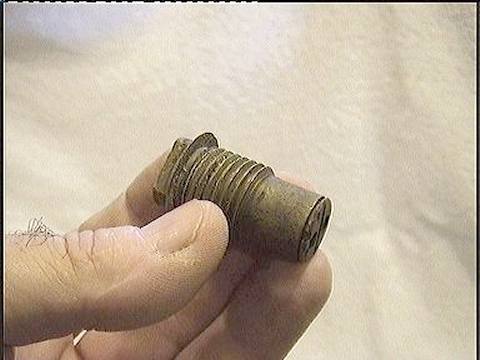
1) to ensure a level of “Bore Safety” and prevent the shell exploding prior to being fired, and,
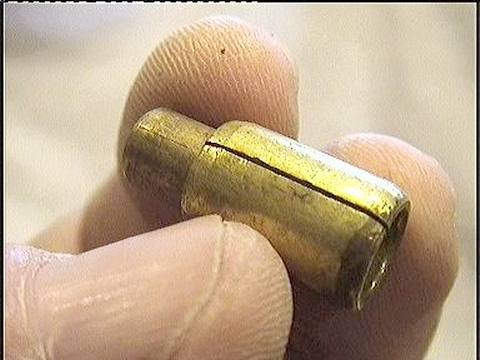
2) to ensure that, once fired, the shell would explode upon hitting something. This was arranged by having a firing pin in the base fuse set into a piece of soft metal in such a way that it was impossible for it to set off the main charge.
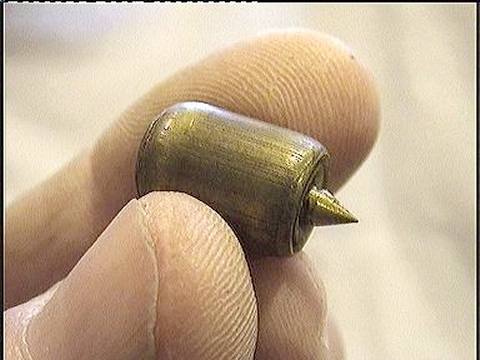
Once the round had been fired inertia would force the soft metal to the rear of the pin and expose the sharp tip. Now if an object was struck the pin would fly forward and the point would set off the shells explosive charge.
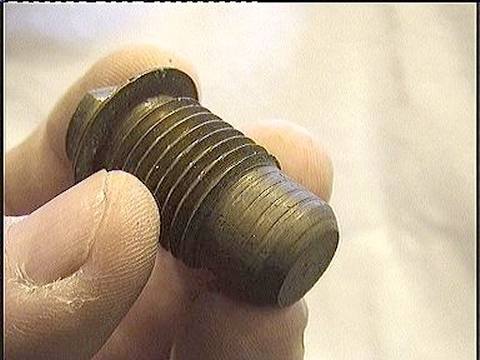
“Base fuses” were frequently replaced by solid plugs when the shell was fired for training purposes, the shell was then filled with an inert substance that would replicate the “Live” rounds weight and so unaffect its ballistic characteristics. There many other types of “Base impact fuses” and were mainly fitted into the larger types of shellThey could also be fitted with a delay feature that would ensure that the shell would explode once it had passed through an object and its fragments, as well as the explosion itself, would damage material and men behind whatever it had penetrated.
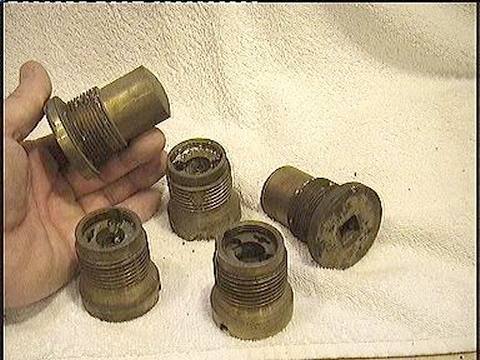
As armour plate became more effective a new type of shell evolved and this was the “Palliser chilled tip armour piercing shell”. As its name suggests it had a tip that was formed in a special mold that would ensure it was rapidly cooled when being cast. This resulted in an extremely hard metal that could penetrate any armour plate then existing. It wasn’t until WW11, and the introduction of much superior armour plate, that these shot were defeated. A shell utilizing a shaped charge warhead that depended upon the “Monroe effect” had to be developed to defeat these newer armours, and even now in 2002 the contest between “Armour” and “Shell” continues unabated. Modern armours consist mainly of “Composites”, meaning layers of differing materials, and even “Reactive” materials that will explode on being hit and thus dissipate the energy of the impacting shot or shell.
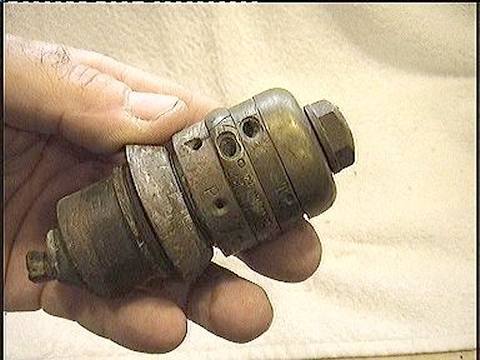
Nose mounted fuses were also developed in many guises and these enabled a shell to be exploded in the air, after a set amount of time had elapsed, before it had hit anything. This found its greatest use in WW1 when it was used to explode “Shrapnell Shells” above and in front of an advancing enemy. It did this to such effect that many, many more men were killed by artillery fired “Shrapnell shells” than from any other cause.
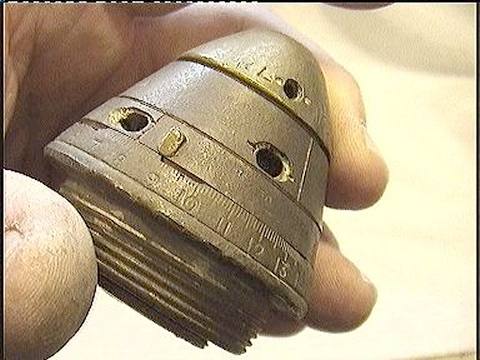
Extract from Bombs and Bullets DVD
Below is a drawing showing the type of shell to which the above fuse would have been fitted. After firing, the time set on the fuse would expire, and the fuse would fire down the shells central tube to ignite the powder charge contained in its base behind the charge of balls. This powder would then explode and force the balls forward along the shells line of flight like some huge shotgun blast. Its killing power over a large area was tremendous, and it replaced the much earlier “Case” and “Canister” shells as the prime “Man-killing” weapon on the battlefield.
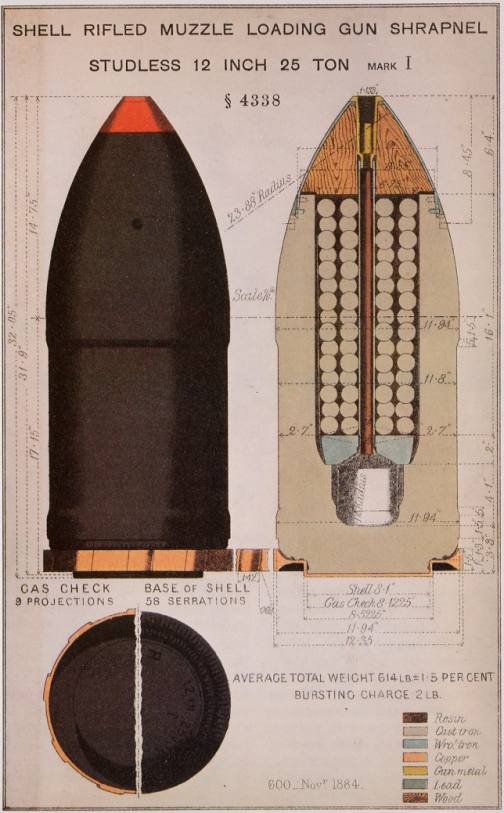
There are many other applications for delayed action fuses, chief amongst them being in an Anti- Aircraft role, and because of WW11, there are many thousands of fuses from successfully exploded shells, and also complete un-exploded rounds where the fuse failed, laying on the sea bed waiting to be found.. Once the round had been fired, the time delay set on the fuse should have ensured that the shell exploded at the end of its flight, however, this didn’t always happen and so an impact element was built into the fuse to ensure it exploded on hitting the ground or the sea, again this didn’t always occur, so there are many shells on the sea bed that have not exploded correctly. This was ok if the gun was firing out over the sea, but caused problems if being fired over land, as the population then not only had to contend with falling bombs but also with faulty AAA shells. Where small weapons were involved such as the 2pdr. Pom Pom or the 40mm. Bofors this wasn’t too much of a problem, but if you had some 3.7″ or even larger 6″ shells coming down then it could ruin your whole day quite abruptly.
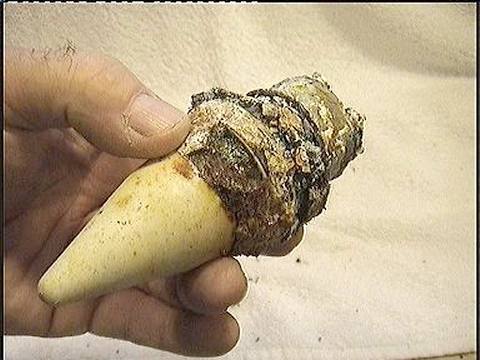
As technology improved it became possible to fit a form of Radar into a shell fuse and this could be set so as to detonate the shell when the reflected return from the target ensured that it was close enough to be destroyed by the exploding shell. These “Proximity shells” were a saviour for the South East of England during WW11 when the Germans started sending over large no.s. of V1’s.. The fuses ensured that the AAA batteries were able to shoot the majority down before they reached any major population centres.
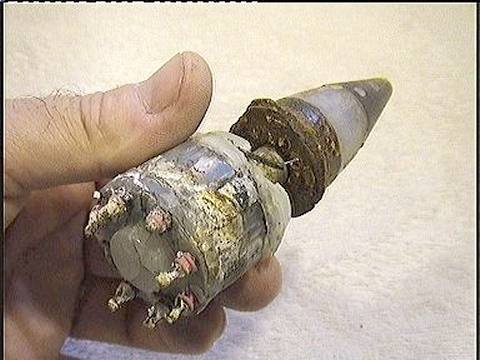
The fuse depended upon the shock of firing breaking a capsule of electrolyte, and the spin of the shells rotation rapidly spread this over the cells of a battery. After a short time the battery was powered up and would energize a small built in Radar emitter.
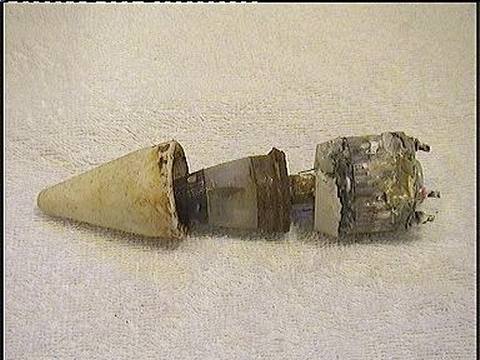
This would then transmit its signal through the Radar transparent plastic nose cone of the fuse, and , when it received a strong enough return signal, it would detonate the shell . These fuses can also be found on the sea bed from the rounds fired by HMS Cambridge during AAA training for the Navy. Because of the materials used in their construction they rapidly rot away and are seldom worth recovering.
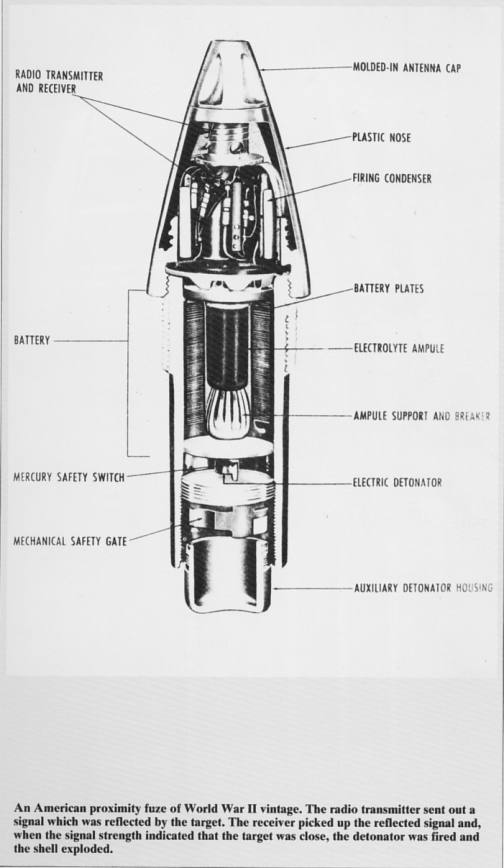
Black Powder and Cordite
Other finds are mainly rounds that have been dumped due to either misfire or being surplus issue at the end of a ships commission.Some of these are empty but can still have percussion fuses in their base, and others are usually still full of propellant.
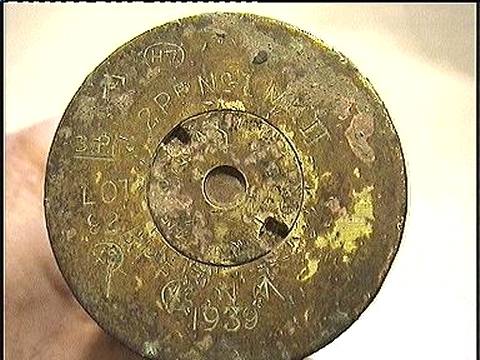
Either way great care is required with these rounds as even after what could be 100 years underwater, the propellant will still burn fiercely if ignited,and the fuses can still explode. Even Blackpowder will burn if the sealing on the cartridge was in good condition.

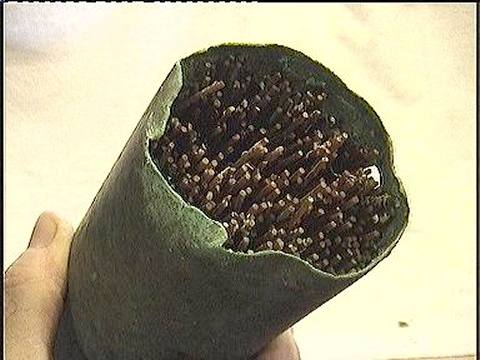
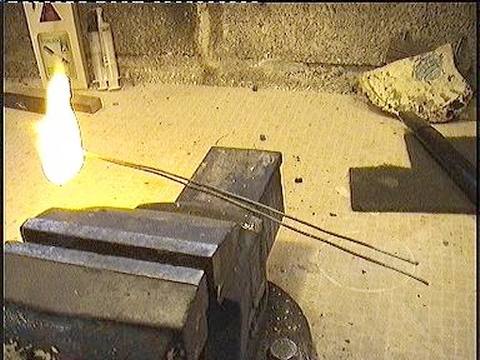
Below is a Nordenfelt 3 pdr. Cartridge case showing a base mounted fuse still in the mouth of the case along with the remains of a projectile long since rotted away. This case is full of “Black powder” propellant which will possibly still burn if allowed to dry out.

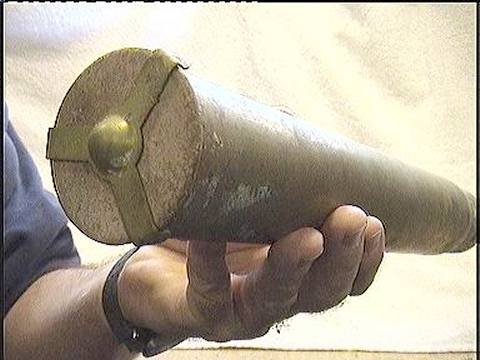
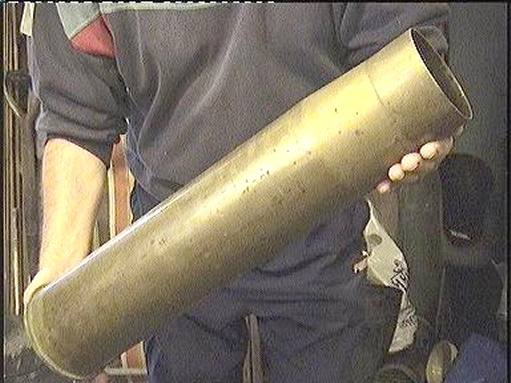
Anti Aircraft Artillery
Other common finds are numerous types of Anti-aircraft artillery (AAA) shells. The older ones are from a derivation of the 1880’s pattern “Maxim” automatic machine gun and were called the 2 pdr. Pom Pom. These guns were fitted to warships up to and during WW2 by which time they were obsolete.

They were superseded by the much more effective 40mm. L40/60 Bofors Gun. Other, newer, larger sized AAA can be found, but as the self destruct fuse has obviously not operated then they are, again, best left alone.
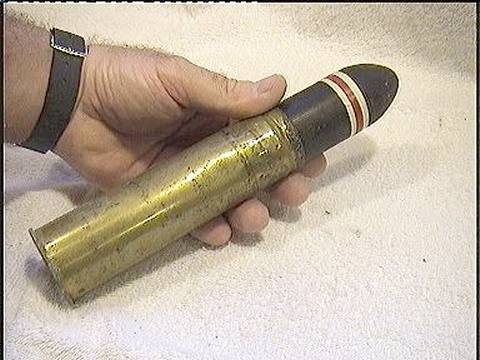
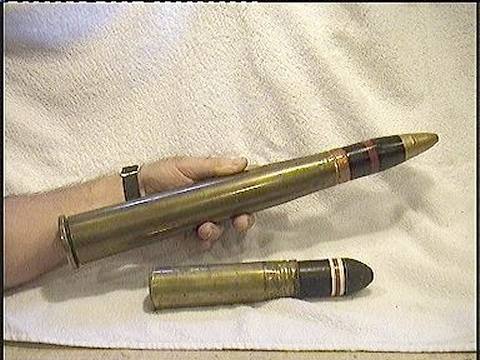
2 Pdr Pom Pom suffered from frequent jamming problems and it became the norm to issue a large mallet with each mounting in order to give the offending breech a “Seamanlike” whack to free the guns mechanism up again.
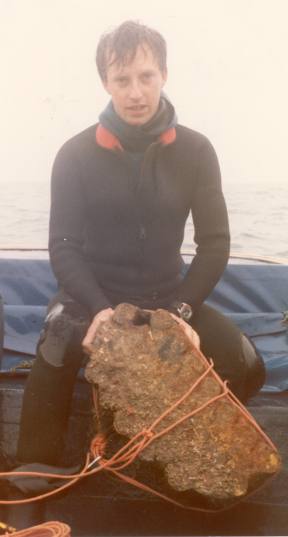
Some of the wrecks around Plymouth used to have huge quanties of 2pdr. shells, but most have now been cleared away. Even so it is not unusual to still find one.
